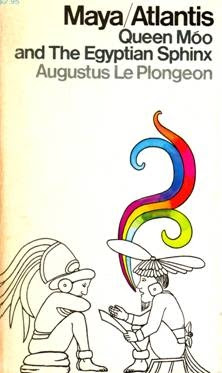In the early 20th Century the Swiss art historian Heinrich Wölfflin attempted in his
Principles of Art History to come up with a method for describing works of art purely in terms of their form (rather than their quality). He eventually came up with five different "successions" which can be thought of almost as axes or spectra on which to locate a given work of art. Thus works of art can be compared on the basis of being linear vs painterly, planar vs recessional, tectonic vs a-tectonic, and so forth. You can then, according to Wölfflin, use this to understand and explain how representative forms change over historical periods.
Wölfflin's method is based on a cod-Hegelian historicist theory in which everything moves cyclically in a thesis-antithesis-synthesis sort of way, but his basic idea - coming up with a way to describe the differences between any given set of paintings - is interesting and sound. Let's try and do something similar with RPGs.
What I'm suggesting here is a normatively-neutral way of describing any game, campaign setting, adventure module, or even individual session, using these four handy Wölfflinian "successions":
Open v Closed. An open game system is one in which there are many (or infinite) possibilities - you could in theory do anything with it. Risus, GURPS, etc. A closed game system is one which is highly specific to a certain period or mood (Night Witches, Dogs in the Vineyard). An open campaign setting is one which leaves things, well, largely open (Isle of the Unknown, Planescape). A closed one is detailed and largely pre-determined (modern Forgotten Realms, the Known World). An open campaign is one which begins as open-ended. A closed one is one in which there is an expectation of a completed narrative arc. An open session is one in which the PCs begin without anything particular to do and set their own goals. A closed session is one in which what happens is largely dictated by circumstance.
Light-hearted v Serious. This is more self-explanatory. Light-hearted doesn't necessarily have to mean "humorous" - it could be, say, a non-combative animal fantasy game you run for your kids or something. Equally, it could be a game involving lots of death or torture if the players aren't taking things seriously or are playing Paranoia or something.
Easy v Hard. A hard game system would be Rolemaster. An easy one would be Ghost/Echo. An example of a hard campaign setting is Wraith: the Oblivion - you have to think about it a lot before you can really understand what's going on; an easy one is the Known World. An easy campaign is one which has simple goals or expectations (clear a dungeon); a hard one is complex and has many different strands. An easy session is one which places few demands on the players; a hard one requires lots of thought and effort.
Loose v Strict. A loose game system is forgiving and has rules which are readily broken or manipulated - like OD&D. A strict game system resists being fooled-around with, like D&D 4th edition. A loose campaign setting is one which does not hold fast to genre convention or to a specific canon, like Rifts. A strict campaign setting is one which does not mix well with others, like Middle Earth. A loose campaign is one in which the DM adopts a kitchen-sink approach; a strict one holds fast to expectations of genre, mood, or style. A loose session is one in which the players and DM frequently "break the fourth wall"; a strict session is one in which most things take place in-character.
Thus, you might describe D&D 5th edition as moderately open (you're generally going to use it for fantasy games, but other than that you're relatively free from constraint), moderately serious (there is a slight tongue-in-cheek element to it but it is essentially played straight), sitting between easy and hard, and relatively loose (you can fiddle with the rules quite easily).
Alternatively, you could compare D&D 5th edition with Pendragon and say it is more open, less serious, easier, and looser. Compared to Amber Diceless, Pendragon is more closed, about as serious, harder, and stricter.
Moving down to campaign settings, you could say Planescape is open, somewhat light-hearted, somewhat hard, and somewhat loose. It is more open than the World of Darkness, more light-hearted, harder, and looser. The World of Darkness is more open than the world of Cyberpunk 2020, more serious, harder, and stricter.
Yoon-Suin is somewhat open, somewhat serious, somewhat hard, and somewhat strict.
Maze of the Blue Medusa is somewhat closed, somewhat serious, quite hard, and quite loose.
Apocalypse World is somewhat closed, serious, somewhat easy, and somewhat strict.
In comparison to AD&D 2nd edition, BECMI is equally as open/closed, but a little bit more light-hearted, a little bit easier, and a little bit looser. On the other hand, 2nd edition is equally as open/closed as 3rd edition and probably equally as light-hearted/serious, but is a little bit easier and a little bit looser.
You can probably think of game sessions you've been involved in and how you might categorise them. I reckon the most recent one I played in was rather closed (it was a pre-published adventure), rather light-hearted (we approached it with a fair amount of levity), pretty easy (what we had to do was largely clear) and rather loose (we didn't hugely get into our characters and often commented on what was going on).
There may be other "successions" I've not thought of.



























